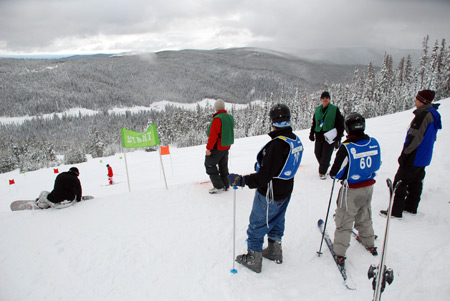By Michelle Werts
A little more than a week ago, the long-dreaded budget sequestration began, which is forcing all federal agencies to make five percent budget cuts to all of their programs, activities, etc. And as we’ve all been seeing in the news, five percent might seem like a small number, but it can have big impacts. For instance, my bus friend (that person you only ever see and talk to while commuting to and from work) mentioned that the topic of furloughs for him and his fellow employees has already been broached. This immediate loss of livelihood is one of the most obvious, tangible effects of sequestration, but its tentacles are actually everywhere.

Let’s start with our beloved national parks. Alison’s recent post outlined how a sequestration will affect visitor services at famous landscapes like Yellowstone and the Grand Canyon, but what about the local economies that rely on those parks? Last month, the National Park Service revealed that visitors to national parks generated $30.1 billion in 2011. More than a third of this spending — to the tune of $13 billion — went directly into local economies within 60 miles of the parks. For every $1 invested in our national parks in 2011, $10 were returned. So if reduced hours of operation and services due to sequestration lead to reduced national park visiting, ripples will be felt for miles.
Next up: fire. In 2012, more than 9.3 million acres burned in wildland fires, which is 28 percent higher than the national 10-year average. More than 4,000 structures were destroyed in 2012 wildfires, compared to the average of 2,700 per year! As you can imagine, all of this led to more requests for firefighting resources than the average — resources that are funded through federal agencies, specifically the U.S. Forest Service. A five percent cut could mean less funds to fight wildfires in 2013, or it could mean other programs may suffer as funds have to be moved to cover firefighting. Both are losing scenarios.
And I don’t even know where to begin with conservation programs across the agencies, as sequestration is going to significantly impact so many programs. Maybe just a few examples from our near and dear U.S. Forest Service (USFS) will suffice.
-

The Lost Trail Powder Mountain Ski Area within Montana’s Bitterroot National Forest. Credit: U.S. Forest Service USFS issues special permits every year for specialized recreation on public land, such as ski areas and outfitter-guides. With budget cuts, USFS estimates it would only be able to manage half of its normal permits, affecting the 122 ski areas and 5,000 outfitter-guides, not to mention others.
- USFS’ Legacy Roads and Trails program creates or retains between 810 and 1,296 high quality jobs in rural America each year. These individuals help with water quality, fish habitat and recreation sites in national forests. It’s estimated that for every $1 million cut for this budget, anywhere between 15 and 24 jobs will be lost. With an FY12 budget of only $45 million, a five percent cut means 30 to 48 jobs are on the line.
- With cuts to the Urban and Community Forestry Program, the ability of local communities, tribes and nonprofits across the country to conserve thousands of acres of forests would be compromised, and these cuts would mean reduced resources to help thousands of communities and towns to manage, maintain and improve their tree cover and greenspaces.
I think we get the picture. Although, for a complete, disheartening look at all of the conservation programs and how they will be impacted by the sequestration, head over to our Policy page.
Our country is in a tough financial jam and cuts may need to happen, but shouldn’t they happen with some concerted thought and planning? Conservation programs represented a measly 1.26 percent of the federal budget in 2012. Is a five percent sweeping cut across them all the best course of action? Let’s hope the continuing resolution proposed by Senate Appropriations Committee Chairwoman Barbara Mikulski (D-MD) that is expected to go up for a vote this week gains some traction because while the cuts would still be present, the Senate continuing resolution would at least allow the agencies to decide where they’re made. I would surely rest easier to know that experts are deciding the fate of conservation, as opposed to blind cuts.